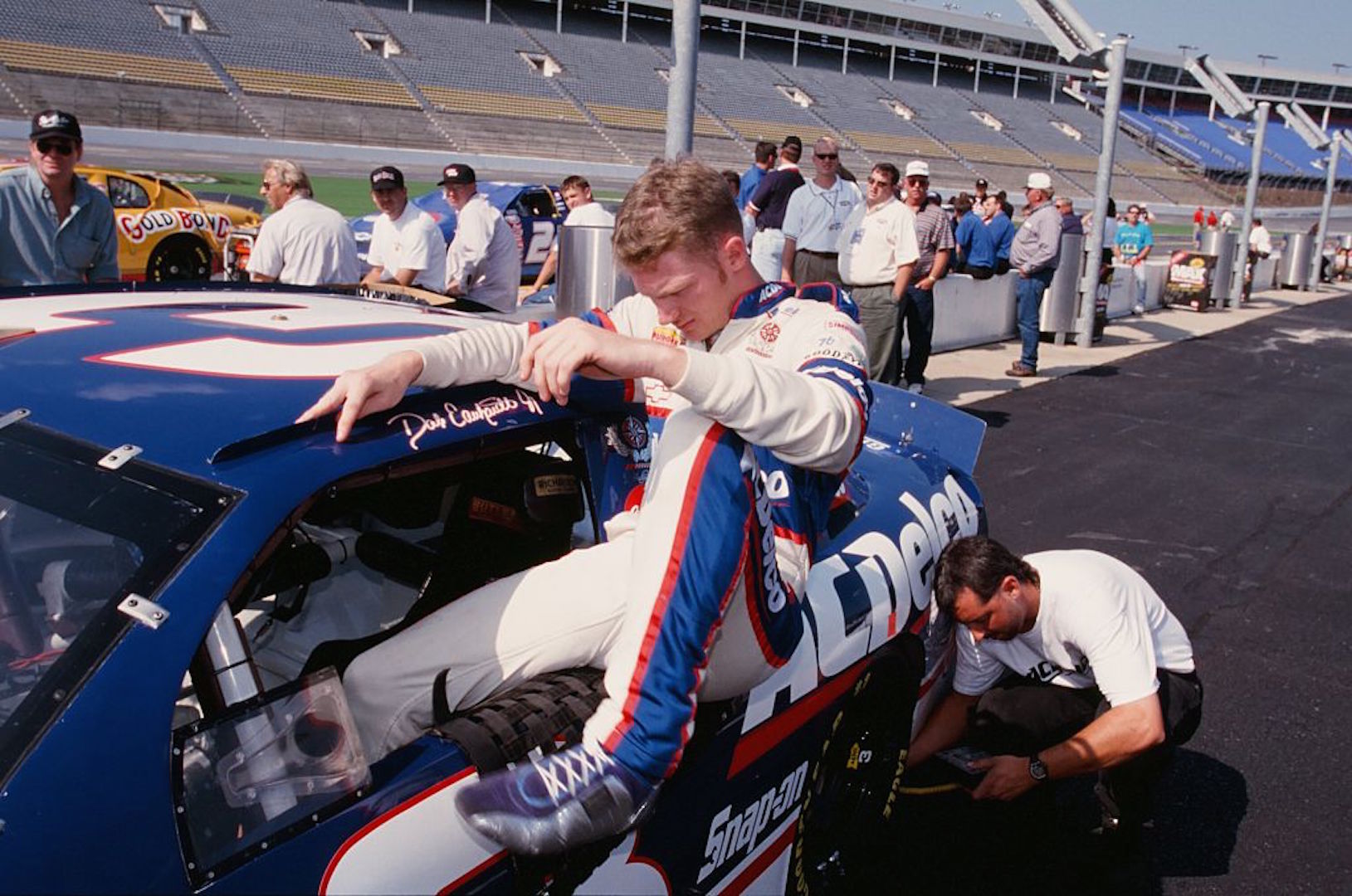

When I was a feature writer for Rolling Stone, I went a long reporting trip with NASCAR’s Tony Stewart and came out of it with a story that put me on Smoke’s bad side for a couple years. Over the course of a month traveling with the NASCAR circus, I had the good fortune of running into Dale Earnhardt, Jr., a couple times.
The first time I met him was at the Sprint Cup race at Phoenix International Raceway. It was godawfully hot, and I was lying down in the sizzling bed of a Ford pickup truck during driver introductions, waiting for Stewart to be called by the announcer and hop aboard. I’d watch him do a lap of the track and wave to each of the grandstands and the crowd on Rattlesnake Hill.
But Dale Jr. was called first and he hopped on board in his National Guard race suit. He saw he me lying miserably on the truck bed, shook my hand and said, “Hey how you doing, pal? You ok?” “Yep,” I said. “Well, enjoy the ride.”
We circled the track, I stayed out of sight and dutifully took some notes—Hot as hell, Jr laughs at TS jokes, its called rattlesnake hill—and then we piled out to watch the race. It was one of those NASCAR midsize track races that center around fuel strategy. A snoozer. I don’t remember who won, but after the race we all piled into Stewart’s golf cart and scooted through the crowd to the helipad, where we’d fly to the local airport and a private jet back to Indiana. Stewart says that Junior sometimes wears a Jimmie Johnson cap so no one recognizes him.
Up at the helipad, Stewart and I stood in line for our turn. Casey Mears stopped by. Robby Gordon said hello. Then Junior walked up right to me and said, “Hey I remember you. You were in the back of the truck.” Yep, I said.
“What’s up, you flying back with Tony? You his cousin or something?”
“I’m writing a profile of him for Rolling Stone.”
“Well shit,” he said, mock angry. “I thought you was a Make-a-Wish kid.”
The history of NASCAR is a thick tome of freewheeling, unhinged Southern octane unleashed. The rednecks and hooligans who rode NASCAR to increasing fame and fortune from the 1960s up to 1990s were rugged sons of bitches. Bill Elliott, Lee Petty, Harry Gant, Dave Pearson, Cale Yarborough, Bobby Allison, A.J. Foyt. These were not the anodyne super-Christians in presposterously branded nomex suits. These were true brawlers, bastards, cheaters—chewers of tobacco and addicts of speed who smelled like fuel and raced in treacherous stock cars in front of patched-together grandstands. The biggest bastard of them all was, arguably, Dale Earnhardt, Sr.
A fan favorite as well as a mercilessly fast and competitive driver, Earnhardt ruled the roost for more than two decades. By the time of his death, in the final lap of the 2001 Daytona 500—a race that his son nearly won—Earnhardt had already come as close to royalty as an American could get.
His son, always called Junior, would spend the rest of his career racing in the shadow of this spectral legend. It was an impossible ask. Over the next 15 years, a business rift collapsed the Dale Earnhardt Inc. team and tore apart his family, and he would fruitlessly chase a Cup championship. Regardless, he became even more popular than his father, earning by some estimates one out of five marketing dollars for entire multi-billion dollar sport.
“Something ain’t right with that boy,” one top-tier, silver-haired dealmaker in the sport muttered to me one day in Talledega, Alabama, before the first ‘Dega superspeedway race of the season in the late 2000s. We were talking about Junior’s penchant for buying wrecked race cars and scattering them around his sprawling farm in outside Mooresville, North Carolina, but the remark was a more general observation.
By nature or nurture, Earnhardt became the most eccentric—and interesting—driver in NASCAR as it reached peak popularity, around 2006 or ’07. In the canned Gordon/Johnson era of NASCAR, he was the thoughtful guy. The eccentric. When Lisa “Left Eye” Lopez, from TLC, was killed in a car crash in 2002, Junior (who was romantically linked to Lopes) has each of the three DEI cars race with a black stripe under the left headlight.
When I met Junior for the first time, he and Stewart were the big names in the sport. Stewart was the impetuous firebrand, quick to temper and unafraid to insult just about anyone their their face. He was also the genuine article: funny, warm, congenial. Away from the track, he was just Tony, a guy who, at the time, lived in a modest suburban split-level in Columbia, Indiana.
Junior was the thoughtful one. He was aloof on track because he had to be: the crowds around him were overwhelming. But he was always courteous, and always honest. As a journalist, if you asked Junior a question, he would always try to answer it. If it was a tough one, he’d take a moment to think it over.
I bumped into him at the last post-season championship dinner held in New York City a few years back, and we chatted briefly. He asked if I was still fronting as a Make-a-Wish kid, and then told me to say hello to a mutual friend of ours who’d profiled him in Rolling Stone a few years earlier. When we parted, he gave me a quick hug.
Stewart retired last year, and Earnhardt is winding up his racing career in a few weeks. Together, the two racers contained just about everything that was great about NASCAR: risk, unpredictability, heat, and soul—all the things that can’t be faked.
Can the sport survive without Junior? Probably, but it’ll never be as real.